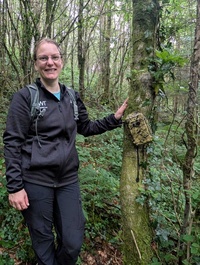Celebrating 50 years – Volunteering, community involvement and citizen science
Laura Lawrance-Owen, VWT's Volunteering and Community Engagement Officer, looks back over the 50 years of volunteering activities with VWT and how these have helped to shape the work we can do in the future.
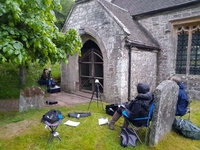
Volunteering has long been a part of the work of the Vincent Wildlife Trust — however in the early days of our 50-year history, it is likely that the assistance provided from various mammal enthusiasts wasn't recognised in this form and as such wasn't recorded as volunteer activity. Sending in records, helping at bat reserves, monitoring of various mammal species, and planning surveys are the types of activities that formed the early days of volunteering at VWT — and I imagine there were plenty more.
From 2011, VWT’s work expanded to working directly and strategically with communities to collect information on species and take active steps towards their conservation. This development was thanks to two projects that worked with local communities — Our Beacon for Bats and Mammals in a Sustainable Environment. Actively engaging society through volunteering, citizen science and community action became a key part of VWT’s work to deliver mammal conservation.
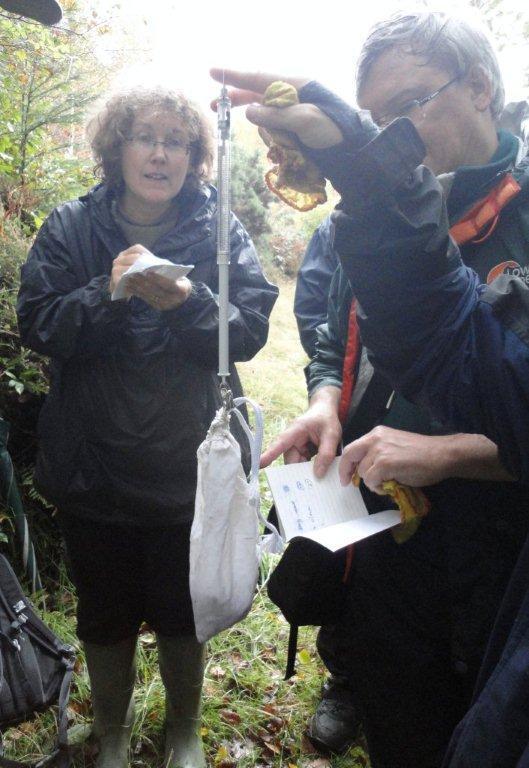
Photo: Monitoring dormice during the Mammals in a Sustainable Environment project.
This approach continued through later projects, including People and Pine Martens in Wales; the Pine Marten Recovery Project; and Back from the Brink Pine Marten Project. VWT’s commitment to engaging society in our work was strengthened in 2018 through the creation of a volunteering and community engagement support role in the staff team and formally written into the VWT Ten Year Strategy 2020 2030.
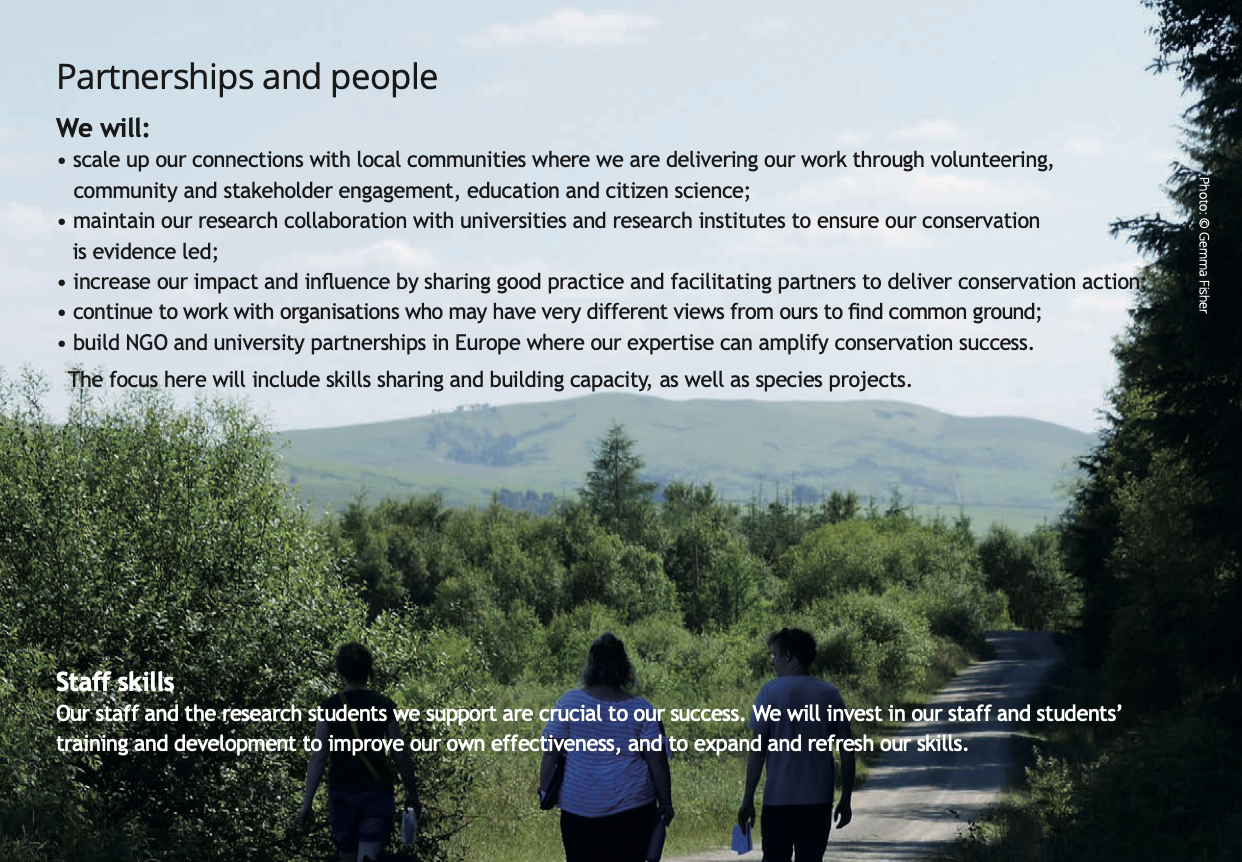
VWT’s Ten-Year Strategy
The strategy has five main strategic objectives and volunteers, communities and citizen scientists have positively contributed to all of these through the following activities — this list does not cover all that volunteers, communities and citizen scientists have contributed in VWT’s 50-year history — it is a just a recent snapshot of the activities carried out since the launch of the strategy in 2020.
Objective 1: developed, tested and implemented a number of cutting-edge techniques and effective conservation interventions, which integrate social science and ecology, for VWT priority mammal populations
- Testing a technique that uses acoustic-based monitoring to locate maternity colonies of barbastelle bats
- Implementing the acoustic-based monitoring technique to survey for barbastelle bats in Pembrokeshire
- Hosting and monitoring pine marten den boxes in strategic recovery areas
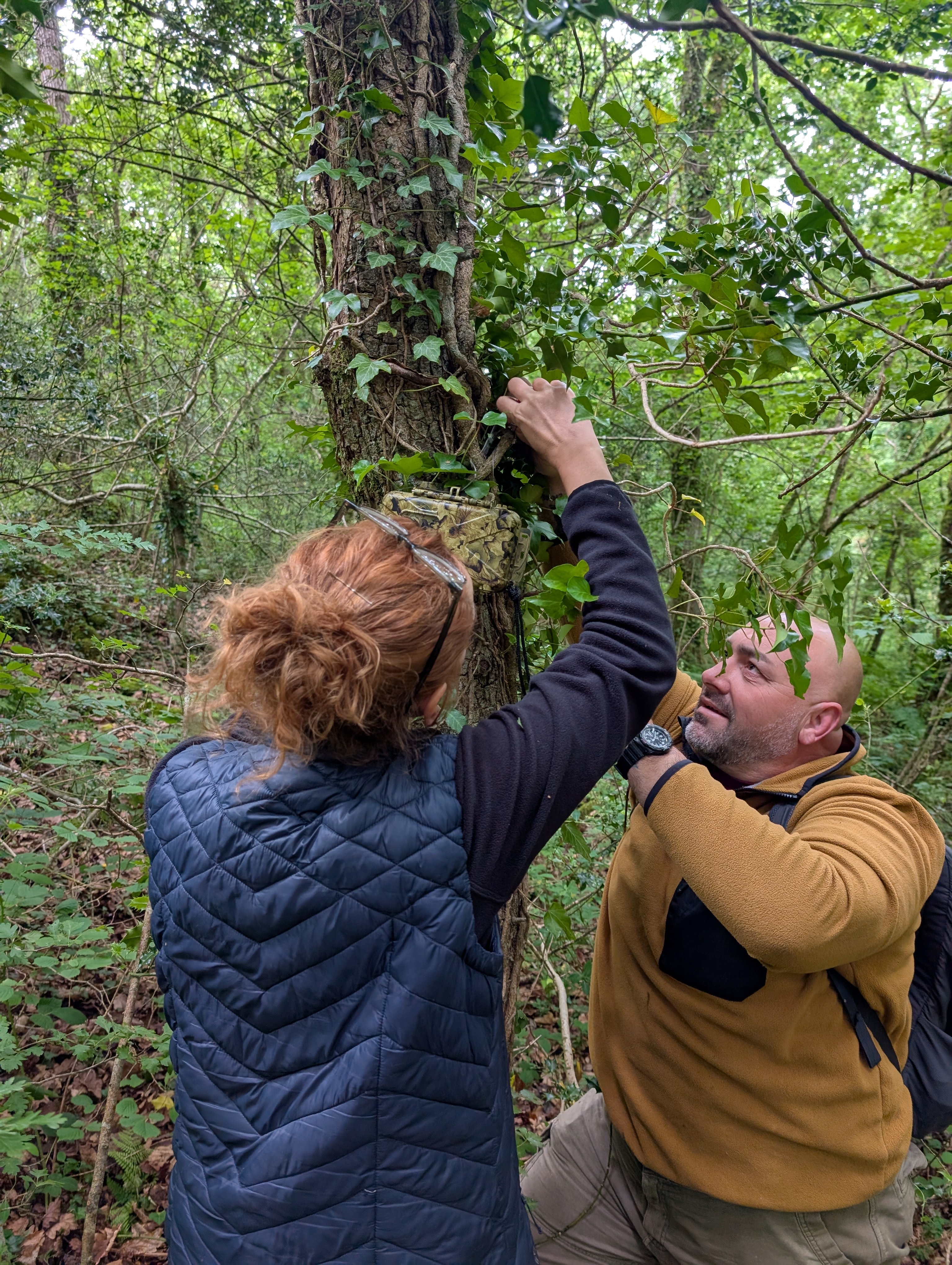
Photo: Setting up acoustic detectors during a volunteer training day for VWT's Natur am Byth Barbastelle Project.
Objective 2: improved methods of bat conservation at a landscape scale, including techniques for enhancing landscape permeability, roosting opportunities and habitat for VWT priority bats.
- Creating and installing bat roosting features in buildings for bats
- Building night roosts for bats
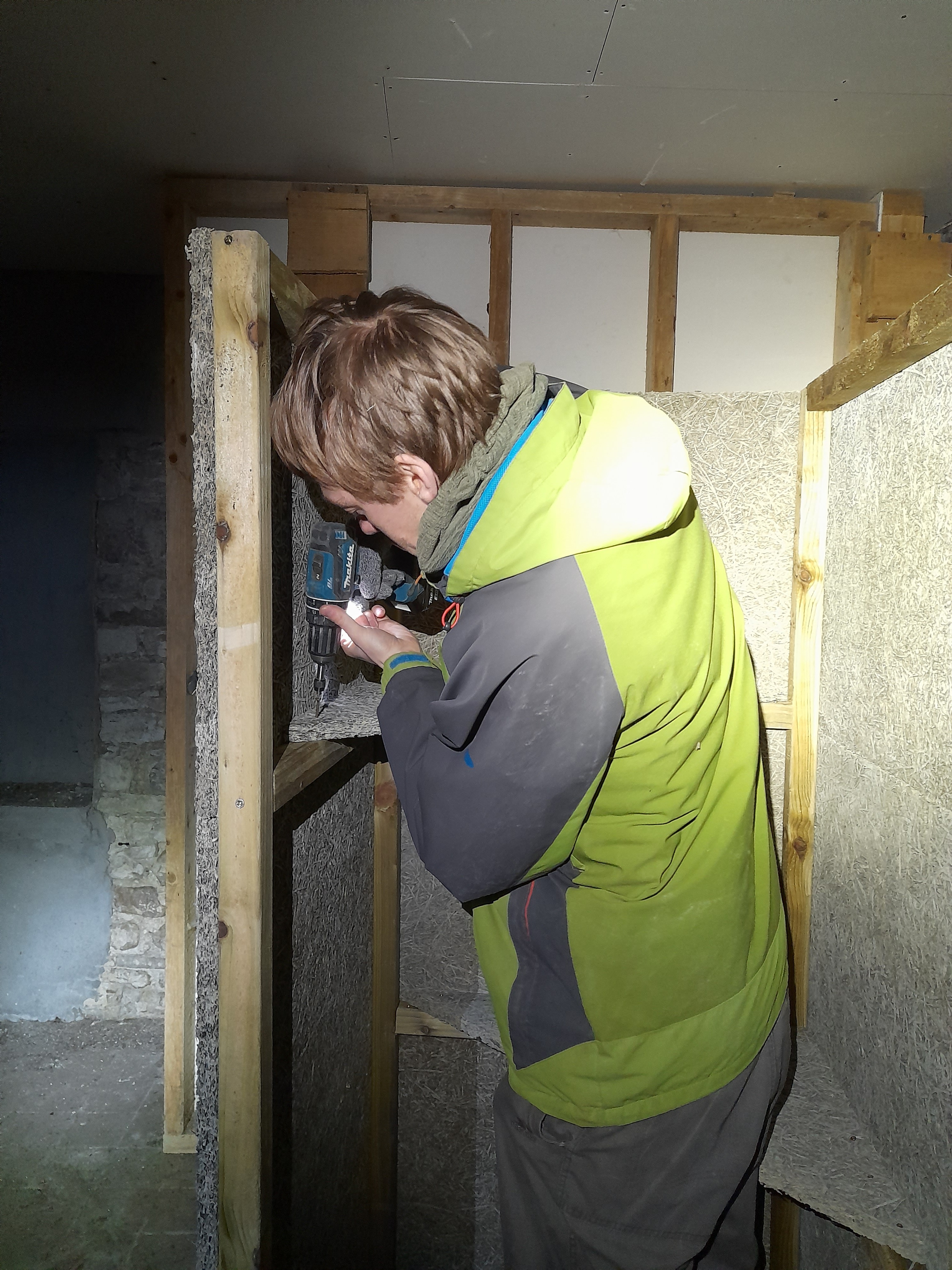
Photo: Creating structures to enhance a bat roost.
Objective 3: strengthened the resilience of VWT priority bat populations at the local, regional and national level with a comprehensive network of bat reserves.
- Assisting with the installation of bat roost enhancements
Monitoring horseshoe bat reserve populations with summer emergence and winter hibernation counts
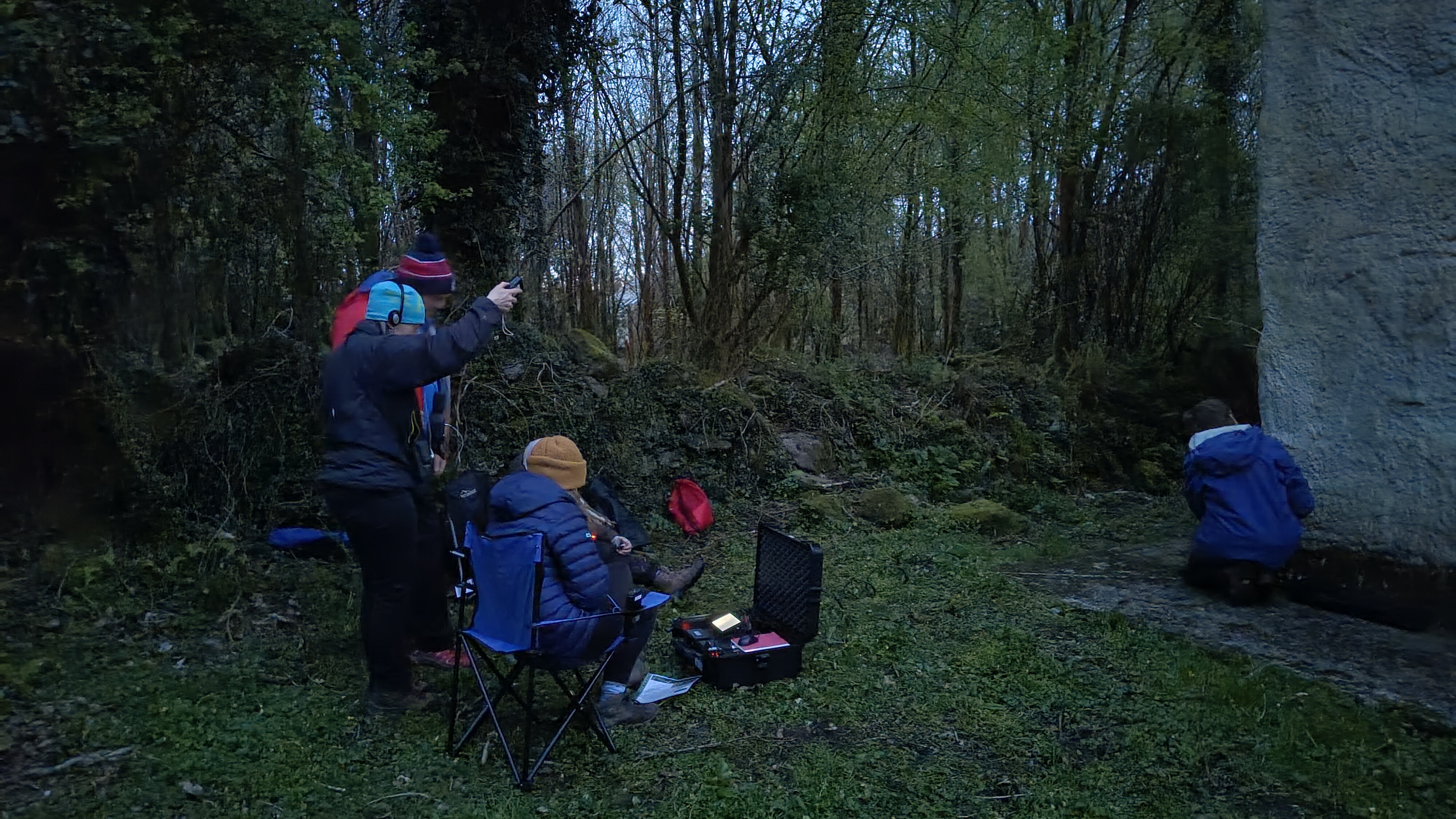
Photo: Training volunteers to carry out emergence counts for lesser horseshoe bats in Ireland.
Objective 4: managed the recovery of VWT Priority Species so that they are self-sustaining, with minimal conflict, where habitat and other conditions are suitable.
- Installing pine marten den boxes
- Monitoring pine marten den boxes and camera stations
- Enhancing roosts and maintaining buildings for bats
- Monitoring areas for pine marten donor populations
- Helping with the translocation of pine martens to partner reintroduction projects
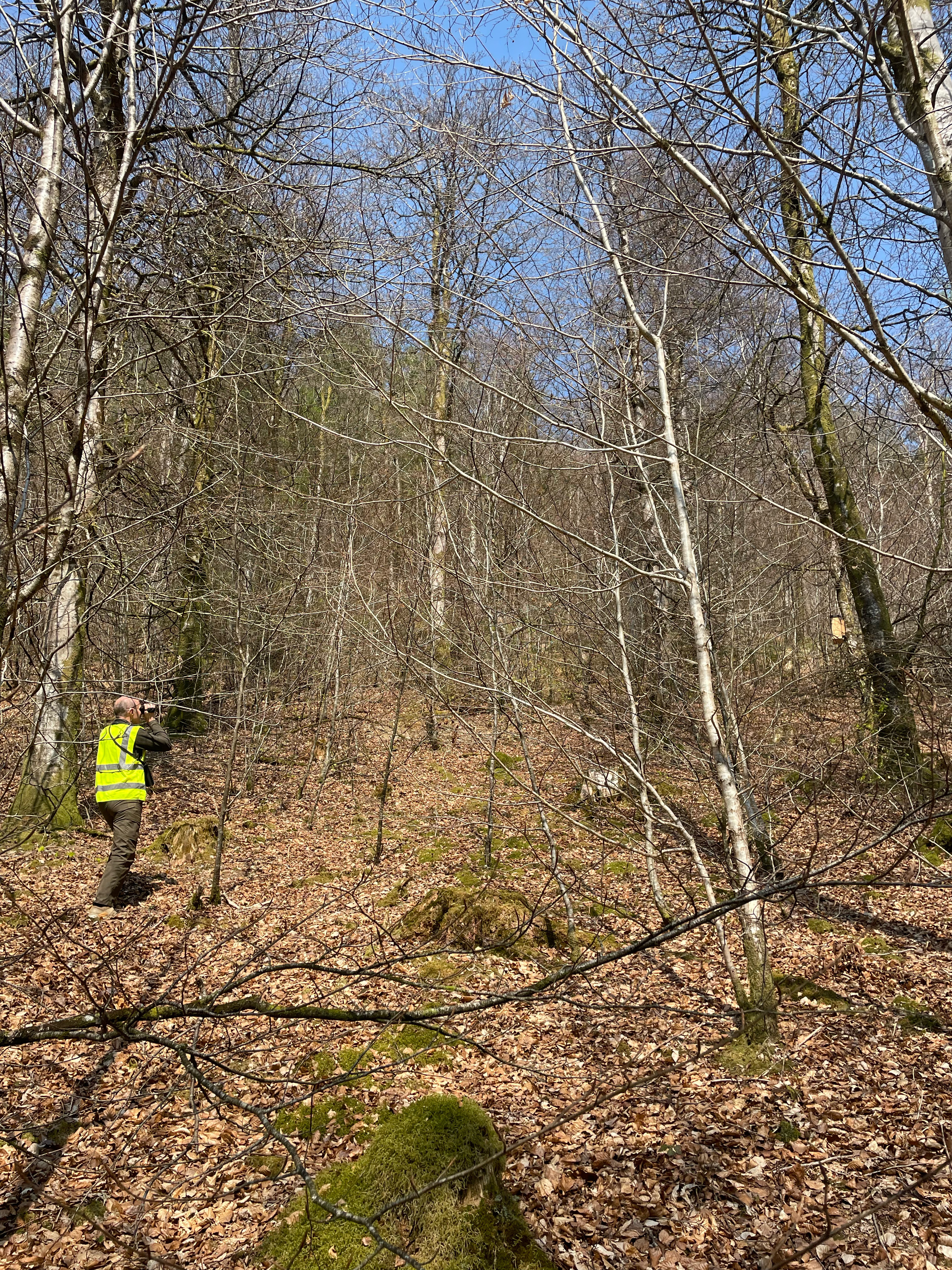
Photo: Volunteers checking pine marten den boxes from a safe distance using thermal imagers to avoid disturbance for VWT's Martens on the Move project.
Objective 5: addressed evidence gaps and data deficiency for VWT Priority Species so that conservation effort is better informed.
- Sharing records to the Irish Stoat Survey
- Sharing records to the National Polecat Survey
- Reviewing and classifying footage from a study of European mink
Most recently, during 2024, Citizen Scientists across the island of Ireland contributed around 400 verified sightings of Irish stoats. In Britain, Citizen Scientists submitted around 900 verified sightings of polecats.
This year, in VWT’s 50th anniversary year, a team of around 240 active volunteers are continuing to support the delivery of monitoring and conservation work for our principal species. Whichever form it takes, whether volunteering, community involvement, citizen science – it all enhances the impact and reach that VWT has in wildlife conservation, and it will long be a part of who we are as an organisation. Together, we can ensure that VWT’s work to conserve threatened mammals is inclusive, sustainable and beneficial to all, including the species we work to protect.
A huge THANK YOU to all volunteers, past, present and future!
Laura Lawrance-Owen, VWT's Volunteering and Community Engagement Officer
